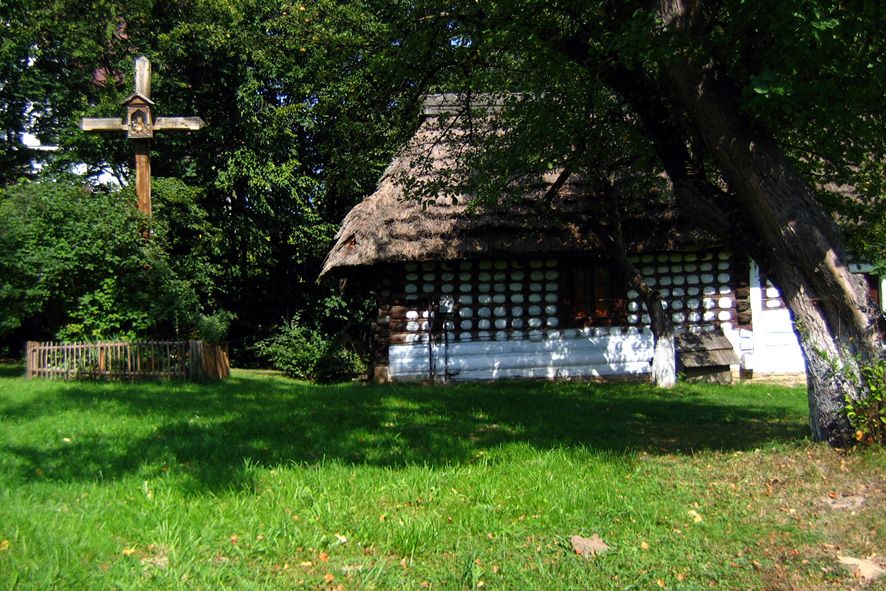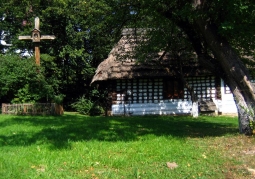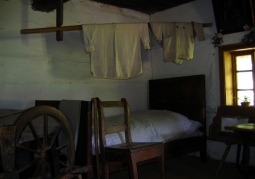Open-air Museum of Pogórze Village prof. Roman Reinfuss - Szymbark
No weather data
0.0 /5
Number of ratings: 0
Open-air museum located in the center of the village of Szymbark, near the school and parish church, on the route Nowy Sącz - Gorlice, being a branch of the District Museum in Nowy Sącz. In 1962, the Voivodship Conservator of Monuments in Rzeszów, mgr Jerzy Tur, took the initiative to organize the Szymbar Museum Center. It was planned then to create a small open-air museum presenting the rural construction of the nearest area. The location of individual facilities in its area is consistent with that developed in 1986 (final version) by dr Ryszard Brykowski and eng. arch. Wojciech Jankowski "The concept of spatial development of the Folk Architecture Center in Szymbark". The main part of the exhibition are objects forming a small open-air museum (approx. 2 ha). All of them are characteristic examples of traditional rural construction occurring in the Gorlickie Foothills. At present, you can watch, among others cottages, outbuildings and rural workshops, incl. from Gródek, Siar, Krygu and Moszczenica. Most come from the nineteenth century, the oldest from the turn of the eighteenth / nineteenth century, while the youngest from the interwar period. The buildings are of log construction, with walls made of wooden logs or semi-logs, less often of populated wood, often with characteristic "lasts" projected in the corners, they are covered with roofs made of staggered straw. Most buildings are cut off with the brown color of the lime whitewash of one of the cottages, while the other is decorated from the outside with lime drops with the addition of ultramarine. Most of the buildings are developed, the interiors are decorated with original equipment from the late nineteenth century, early twentieth century and the interwar period. Good workshop and cottage equipment allows organizing demonstrations of traditional crafts and rural activities (forging, weaving, turning of clay pots, etc.). In the vicinity there is a wooden bourgeois manor moved from Gorlice, where you can see a permanent exhibition presenting the manor tradition in the Gorlice Foothills.
Komentarze
No results
Nearby places
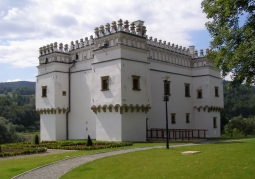
Gładyszów fortified manor house - Szymbark
Category: Manor housesThe manor in Szymbark built around 1540, located in the town of Szymbark in the Gorlice poviat. This is the best example of a fortified castle in Poland. Former seat of the Gładyszów family. It is a very valuable...
1 km
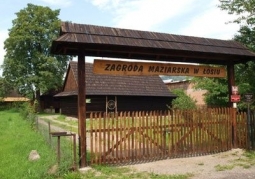
Maziarian farmstead - Łosie
Category: Open-air museumsThe ethnographic museum, a branch of the Karwacjanów and Gładyszów Manor Museum in Gorlice, located in the village of Łosie, presents the history of maziaria, i.e. trade in oil and grease, which inhabitants of this...
6 km
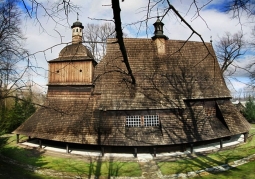
Church St. Filip and Jakub - Sękowa
Category: ChurchesThe affiliate church. St. Filip and Jakub in Sękowa is one of the most valuable churches located on the Wooden Architecture Trail of Lesser Poland, the Low Beskids area. It was built in 1520 from hand-hewn larch trees....
8 km

Orthodox church of the Protection of the Holy Virgin - Owczary
Category: ChurchesThe temple in Owczary was built in 1653. It was the second such structure in this place, the first one was destroyed under the influence of unstable soil. In 1701 the presbytery of the church was completely rebuilt, in...
8 km
Phone
48 18 3513114
Godziny otwarcia
May – September Tue – Fri 9.00-17.00, Sat and n / a 9.00-18.00, October-April Monday - Fri 9.00-15.00
Service prices
Guided ticket PLN 7-4, Walking ticket without guide PLN 4-2.
Nearby places

Gładyszów fortified manor house - Szymbark
Category: Manor housesThe manor in Szymbark built around 1540, located in the town of Szymbark in the Gorlice poviat. This is the best example of a fortified castle in Poland. Former seat of the Gładyszów family. It is a very valuable...
1 km

Maziarian farmstead - Łosie
Category: Open-air museumsThe ethnographic museum, a branch of the Karwacjanów and Gładyszów Manor Museum in Gorlice, located in the village of Łosie, presents the history of maziaria, i.e. trade in oil and grease, which inhabitants of this...
6 km

Church St. Filip and Jakub - Sękowa
Category: ChurchesThe affiliate church. St. Filip and Jakub in Sękowa is one of the most valuable churches located on the Wooden Architecture Trail of Lesser Poland, the Low Beskids area. It was built in 1520 from hand-hewn larch trees....
8 km

Orthodox church of the Protection of the Holy Virgin - Owczary
Category: ChurchesThe temple in Owczary was built in 1653. It was the second such structure in this place, the first one was destroyed under the influence of unstable soil. In 1701 the presbytery of the church was completely rebuilt, in...
8 km
